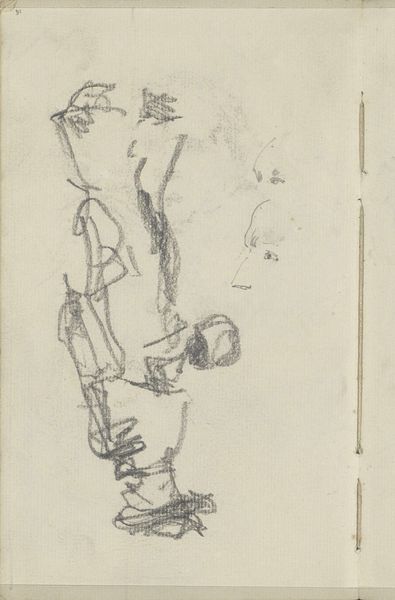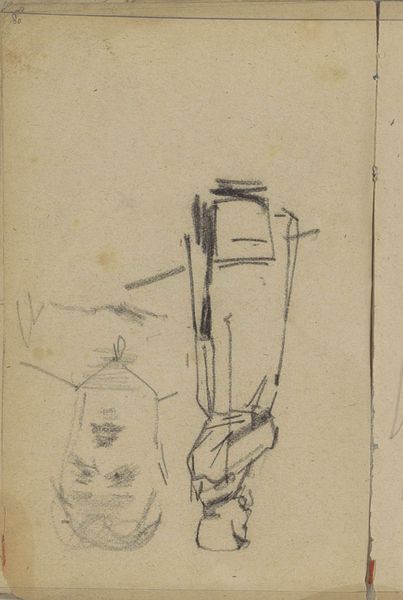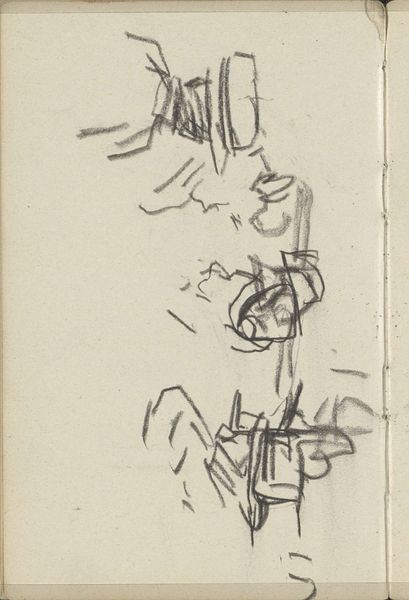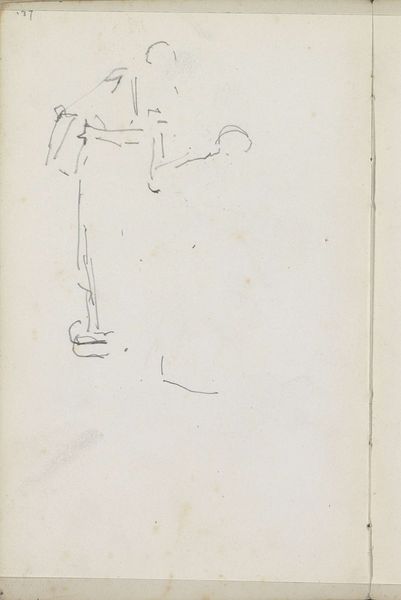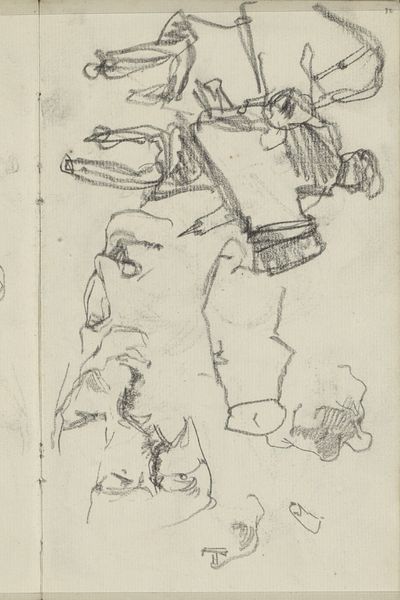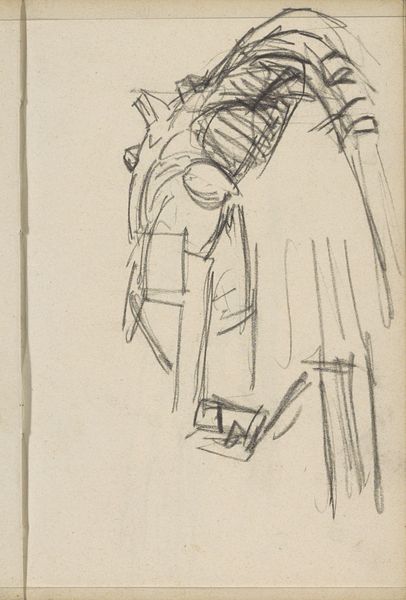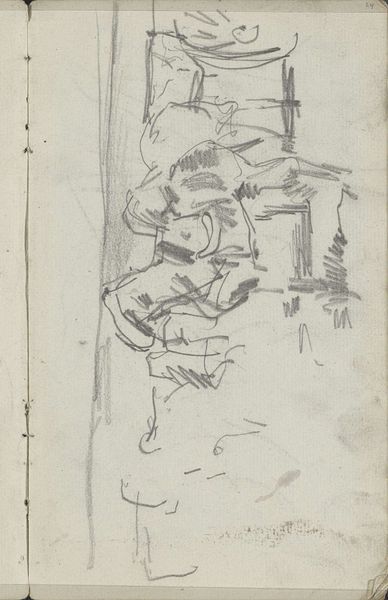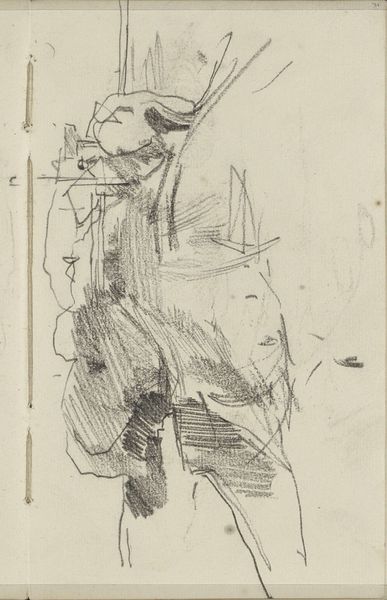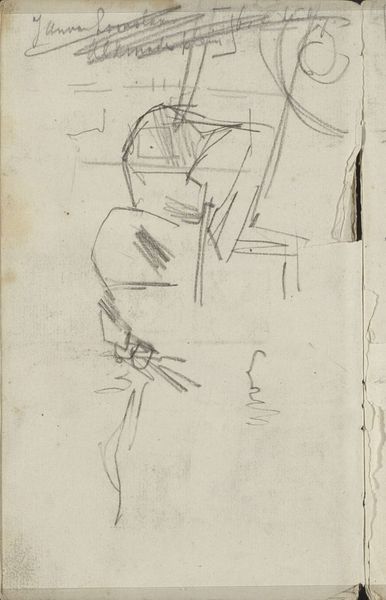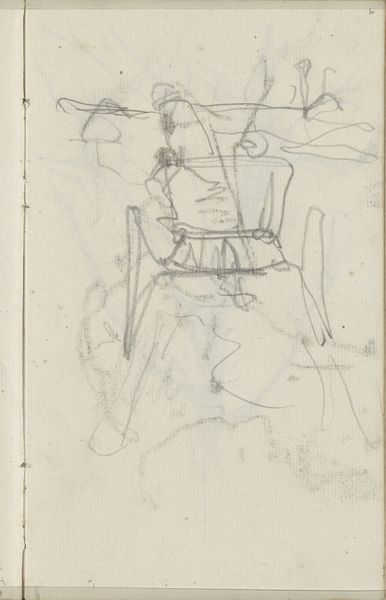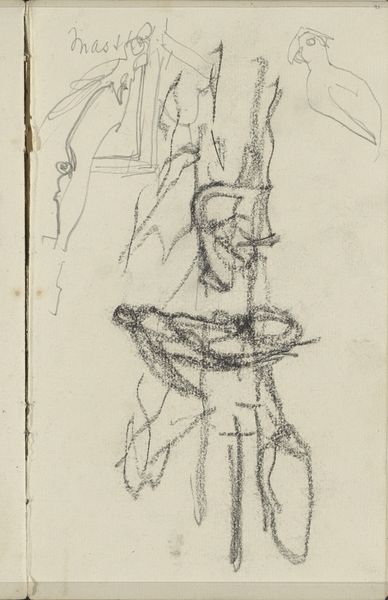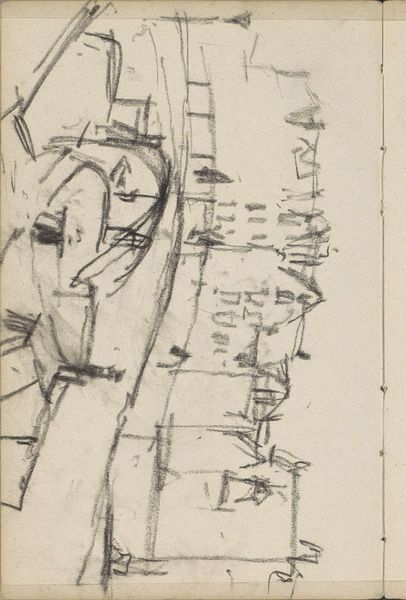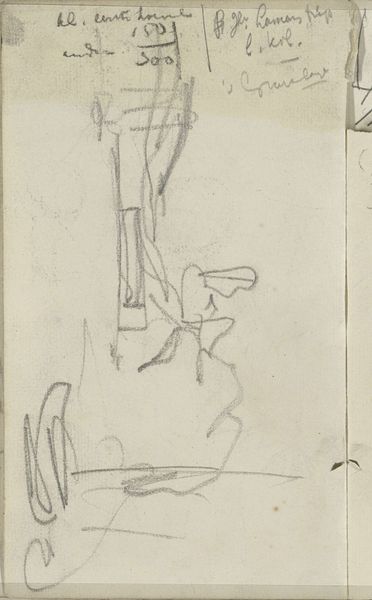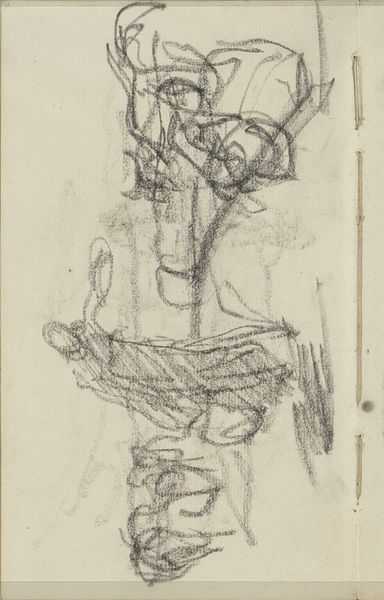
drawing, pencil
#
drawing
#
imaginative character sketch
#
quirky sketch
#
sketch book
#
landscape
#
figuration
#
personal sketchbook
#
idea generation sketch
#
sketchwork
#
character sketch
#
pencil
#
sketchbook drawing
#
genre-painting
#
storyboard and sketchbook work
#
sketchbook art
#
realism
Copyright: Rijks Museum: Open Domain
Curator: This is a pencil drawing entitled "Figuur op een paard en wagen," which translates to "Figure on a horse and cart," by Johan Hendrik Weissenbruch. The piece dates between 1834 and 1903. It's currently held in the Rijksmuseum collection. Editor: It’s so light, almost ephemeral. A quickly jotted sketch. It captures a feeling more than a detailed scene, I think, quite raw and direct. Curator: Exactly, this sketch provides insights into the artistic process during the late 19th century, when artists began emphasizing more spontaneous modes of expressions over academic formalism. The subject matter here represents an interesting social commentary. Editor: Interesting to me how exposed the process is. The texture of the paper comes through—you can practically feel the artist's hand moving across the surface. How did the availability of these sorts of inexpensive drawing materials influence art-making at this time? Curator: It democratized the visual arts. Weissenbruch captured the spirit of ordinary life, elevating everyday moments through his skill. Remember, this period saw increased urbanization and changing social structures, leading artists to engage more directly with scenes of daily life. The act of drawing was transforming from a preparatory tool to a legitimate artistic expression. Editor: I’m particularly interested in that cart's wheel. It looks almost casually rendered, yet you get a complete sense of its roundness and mass. You understand that the construction is made up of wood and iron, how materials are put together. What strikes you about the economy of line in relation to the function it portrays? Curator: What strikes me is how rapidly societal roles and interactions transformed. Art historians look at how such images were circulated, displayed, and how their accessibility changed over time to influence taste and understanding about aesthetic conventions. Editor: Thank you, I love the look and feel of art making from a production perspective. I can certainly now consider other historical viewpoints. Curator: It's vital for people to comprehend artwork. Analyzing history together helps me better appreciate this wonderful piece.
Comments
No comments
Be the first to comment and join the conversation on the ultimate creative platform.
